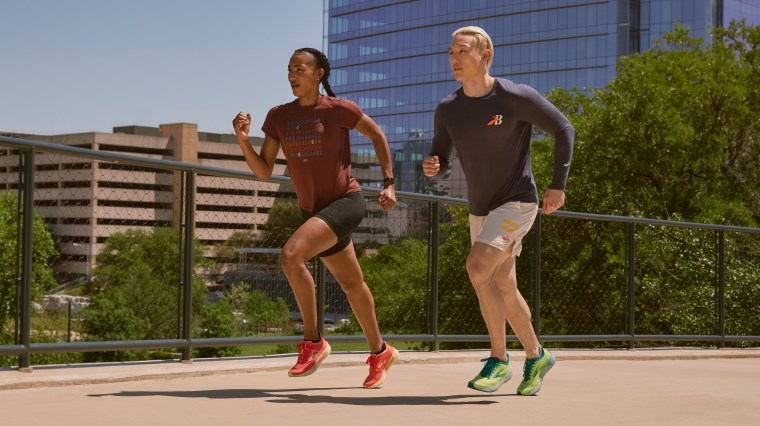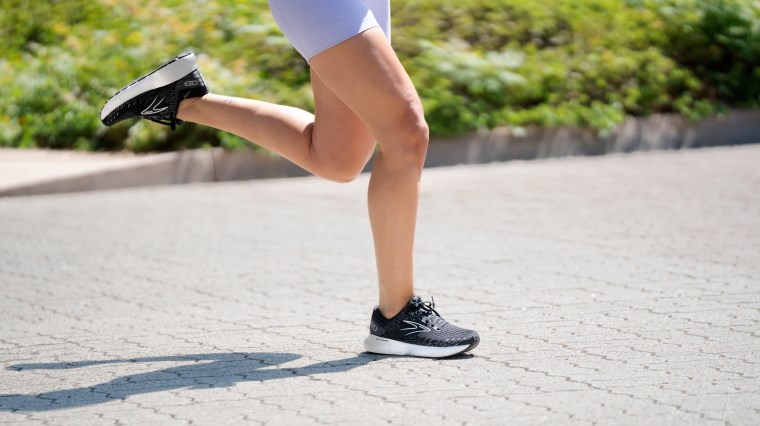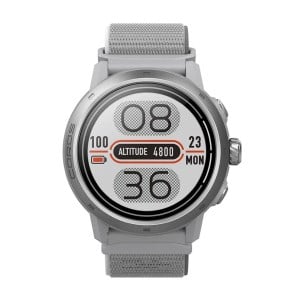What Is Cadence Running? A Complete Guide For Runners

What is cadence running, and how can it affect your training?
At its core, cadence is a key factor in running that can affect your risk of injury, efficiency, speed, and overall enjoyment of the activity. Understanding the science behind cadence in running is like getting a backstage pass to your own performance. It’s not just about moving your legs faster; it’s a game-changer for your running form, injury prevention and energy levels.
Let’s dive into the nitty-gritty of cadence running.
How cadence impacts running form
Have you noticed how a slight tweak in your stride can make a world of difference in your running form?
In a nutshell, cadence in running refers to the number of steps a runner takes per minute. It is often measured as ‘steps per minute’ (SPM) and is an important part of developing your running form and technique.
For example, increasing your cadence can actually decrease your stride length. A shorter stride means less impact on your joints, making your runs smoother and more efficient. Conversely, a higher cadence naturally leads to a quicker arm swing, which helps maintain a balanced and coordinated running posture.
Your cadence while running plays a role in reducing your risk of injury as well. A higher cadence, for example, is linked to decreased ground reaction forces. In simple terms, that means less impact on your body when your foot hits the ground. This not only reduces the risk of injuries but also improves shock absorption.
With that said, running is a high-impact sport, and impact is unavoidable – thus, the risk of impact-related injuries is always present. However, there are ways to minimise the risks.
Increasing your cadence can help you conserve energy, as you can cover more ground while spending less time making contact with the ground. This would mean more efficient impact (when your feet hit the ground) and better friction (when you propel yourself forward).
It’s also why it’s recommended to wear men's running shoes or women's running shoes and trail running shoes that are suited to improving your running cadence. With proper support, you can develop your running to its optimum efficiency while also keeping the risks of injury to a minimum while you train.
If you’re wearing compression tights to aid performance, pair them with athletic footwear, such as ASICS shoes or Mizuno shoes, which are designed to complement certain running forms by providing support for your cadence while running.
Remember: there’s no one-size-fits-all cadence. Whether you’re a newbie or a seasoned pro, understanding the science behind cadence running can be a real asset when you’re training. Keep training at your own pace, and your body will naturally find the rate that’s most efficient for you.
How cadence transforms your run
Your running cadence can have a significant impact on your running form, affecting various aspects such as stride length and foot strike. Here’s how changes in cadence can influence your running form.
Stride length
- Higher cadence. A higher cadence typically results in shorter strides. Shorter strides can reduce the impact forces on your joints and muscles, potentially lowering the risk of injury.
- Lower cadence. A lower cadence often leads to longer strides, which can increase impact forces and may lead to overstriding. Overstriding can put extra stress on your knees, hips and lower back and may lead to injury.
Foot strike
- Higher cadence. A quicker cadence can result in a midfoot or forefoot strike, which is generally considered to be more efficient and less injury-prone than a heel strike.
- Lower cadence. A slower cadence can result in a heel strike, which generates greater impact forces, in turn increasing the risk of injuries like shin splints and stress fractures.
Body alignment
- Higher cadence. A faster cadence can promote better alignment of the hips, knees and ankles and help reduce the likelihood of injuries such as runner's knee or hip issues.
- Lower cadence. A slower cadence may lead to poor alignment, increasing the risk of injuries like runner's knee, IT band syndrome and hip problems.
Energy efficiency
- Higher cadence. Shorter, quicker steps can be more energy-efficient, allowing you to maintain better form for longer periods.
- Lower cadence. Longer strides at a slower cadence can be less energy-efficient, leading to quicker fatigue and a breakdown in running form.
Balance and stability
- Higher cadence. A higher cadence can improve your balance and stability, especially on uneven terrain or during trail running.
- Lower cadence. A lower cadence can make it more challenging to maintain balance, particularly on uneven surfaces.
💡KEY TAKEAWAY: Your running cadence can have a substantial impact on your running form, affecting everything from your stride length and foot strike to your body alignment and energy efficiency. Adjusting your cadence can be a useful way to improve your running form, reduce the risk of injury and enhance performance.
Practical Tips To Boost Your Cadence

Improving your running cadence can be a gradual process that requires attention to detail and consistent practice. Here are some useful tips to help you develop your cadence.
Measurement and monitoring
- Know your baseline. Use a running watch or smartphone app to measure your current cadence. You can also manually count your steps for a minute while running to get an idea of your starting point.
- Set targets. Aim for a cadence within the 160 to 180 steps per minute range, which is generally considered optimal for most runners. However, the ideal cadence can vary from person to person; if this range is too high or too low for you, adjust accordingly.
Equipment and training techniques
- Metronome drills. Use a metronome app or device set to your target cadence. Try to match your steps with the beats from these drills to develop your cadence.
- Interval training. Incorporate short intervals of higher cadence running into your regular runs and gradually increase the duration of these intervals over time.
- Athletic running shoes. Consider running in shoes specially designed to provide support for running, as they will help you develop your cadence more naturally and help minimise your risk of injury while training.
- Cadence sensor. Some advanced running watches come with built-in cadence sensors that provide real-time feedback, helping you stay on target.
Consistency and review
- Don’t rush. Increasing your cadence too quickly can lead to fatigue or even injury. Aim for a gradual increase in your cadence every couple of weeks.
- Listen to your body. If you experience discomfort or fatigue, it may be a sign that you’re pushing too hard. Take it easy and allow time for adaptation.
- Regular checks. Periodically measure your cadence to track your progress.
- Adjust as needed. If you find that a certain cadence is uncomfortable or leads to fatigue, don’t hesitate to adjust. The goal is to find a sustainable, comfortable cadence that also improves your efficiency and reduces injury risk.
By incorporating these tips into your training regimen, you can work on improving your cadence effectively and efficiently.
💡KEY TAKEAWAY: There’s no one-size-fits-all when it comes to cadence. Your body will naturally find its groove based on your unique build and fitness level. But these tips can serve as a solid training guide to help you find your optimal cadence.
At Sportitude, we don’t just offer elite running gear. We stand with you in every sprint and marathon, equipping you with the expertise, tools and mindset to surpass every finish line.


